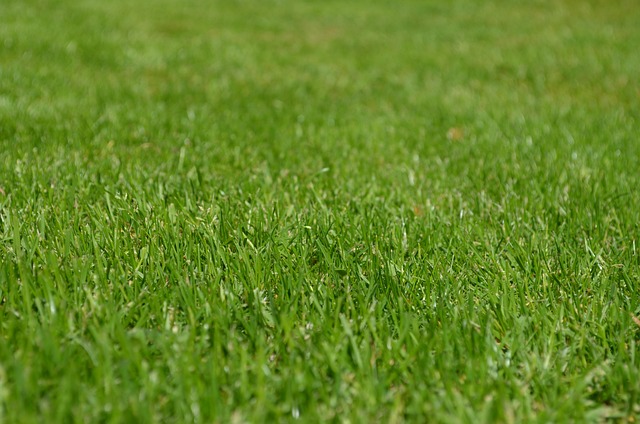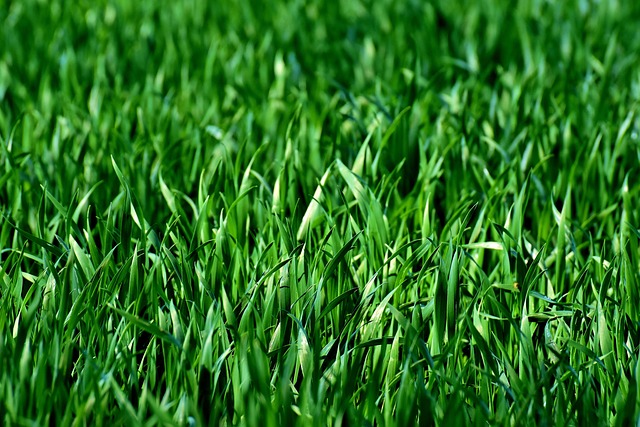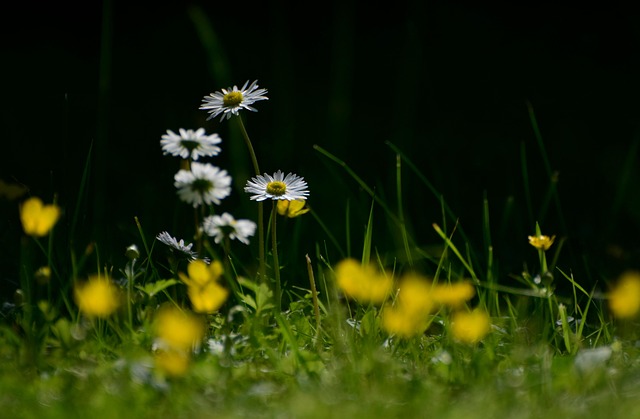Lawn care and landscaping professionals emphasize the significance of regular fertilization (nitrogen, phosphorus, potassium) in spring and fall for grass growth. Combined with effective weed control through preventive and curative measures, this strategy maintains a lush, green lawn throughout the year. By integrating these services, experts enhance aesthetics and turf resilience while promoting sustainable practices, considering environmental factors for optimal grass development and weed management.
Lawn fertilization and weed control are essential components of any comprehensive lawn care regimen. Understanding the science behind fertilization and mastering effective weed management techniques can transform your outdoor space into a lush, vibrant oasis. This article delves into the intricacies of these processes, providing insights for both homeowners and professionals in the field of lawn care and landscaping. Discover proven strategies to nurture healthy grass while minimizing weed growth, ensuring your lawn stands out as the envy of the neighborhood.
- Understanding Lawn Fertilization: The What, Why, and When
- Effective Weed Control Strategies for a Healthy Lawn
- Integrating Fertilization and Weed Control: Best Practices for Lawn Care and Landscaping Professionals
Understanding Lawn Fertilization: The What, Why, and When

Lawn fertilization is a critical aspect of effective lawn care and landscaping, ensuring your grass stays lush, green, and healthy. Understanding this process involves grasping what fertilizers are, their purpose in lawn maintenance, and recognizing the optimal times to apply them. Fertilizers act as food for your lawn, providing essential nutrients like nitrogen, phosphorus, and potassium, which are vital for grass growth and development. These nutrients support a robust root system, promote lush foliar growth, and enhance overall lawn health.
The ‘when’ of fertilization is just as crucial as the ‘what’. Timing plays a significant role in maximizing the benefits. Spring and fall are generally considered the best times to fertilize, as grass actively grows during these seasons. A balanced fertilizer application in early spring helps prepare your lawn for the growing season, while a late-fall feed ensures the lawn has sufficient nutrients to endure winter and encourage strong growth in the new year. Regular, consistent fertilization, coupled with effective weed control measures, is key to achieving and maintaining a vibrant, healthy lawn that forms the backbone of attractive landscaping.
Effective Weed Control Strategies for a Healthy Lawn

Maintaining a lush, green lawn free from weeds is an essential part of lawn care and landscaping. There are several effective strategies to achieve this goal. Firstly, regular mowing at the correct height can inhibit weed growth by reducing sunlight penetration to the soil, which many weeds rely on for survival. Additionally, using a sharp mower blade ensures clean cuts, minimizing damage to grass blades and promoting healthier growth.
Integrating a robust weed control program is another critical aspect. This involves both preventive and curative measures. Pre-emergent herbicides can be applied before weed seeds germinate, while post-emergents target established weeds. Cultural practices like improving soil health through proper aeration and fertilization create an unwelcoming environment for weeds, further enhancing the overall lawn’s resilience.
Integrating Fertilization and Weed Control: Best Practices for Lawn Care and Landscaping Professionals

Integrating fertilization and weed control is a best practice for lawn care and landscaping professionals, offering a comprehensive approach to maintaining lush, healthy grass. By combining these two essential services, experts can achieve optimal results in terms of both aesthetics and turf health. Fertilization provides necessary nutrients that promote growth, strengthen roots, and enhance overall resilience against environmental stressors. Simultaneously, effective weed control prevents competition for resources, ensuring the desired grass species thrives.
This integrated approach requires careful timing and selection of products. Professionals should consider seasonal variations, as different fertilizers and weed control methods may be required during spring, summer, and fall. Regular monitoring is key; regularly assessing lawn health and identifying specific weed pressures allows for targeted applications, minimizing environmental impact and promoting sustainable turf management practices in the context of lawn care and landscaping.
In conclusion, mastering lawn fertilization and weed control is essential for any professional in the field of lawn care and landscaping. By understanding the science behind fertilization and employing strategic weed management techniques, experts can transform lush, green lawns into thriving oases. Integrating these practices seamlessly ensures not only aesthetically pleasing landscapes but also healthy, vibrant environments that stand the test of time.
